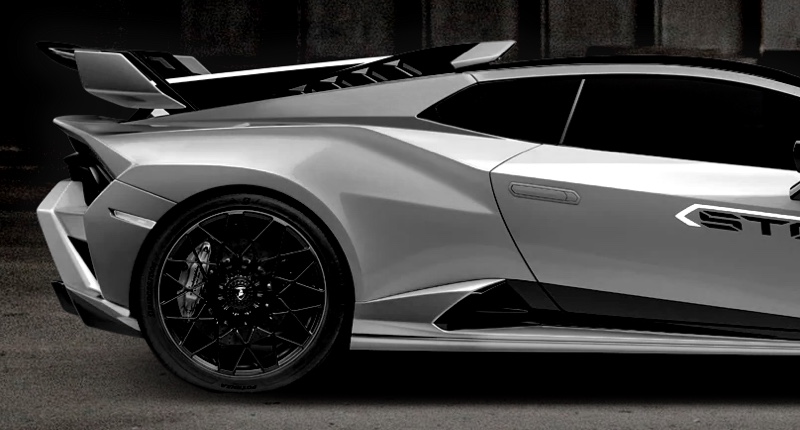The Ultimate Guide to Carbon Fiber in Aerospace Applications
- Introduction: Why Carbon Fiber is a Game-Changer for Aerospace
- The Rise of Carbon Fiber in Aerospace
- Key Aerospace Applications of Carbon Fiber
- Choosing the Right Carbon Fiber for Aerospace Applications
- The Science Behind Carbon Fiber’s Aerospace Performance
- Challenges and Solutions in Carbon Fiber Aerospace Applications
- Case Studies: Carbon Fiber in Action
- Why Partner with Supreem Carbon?
- Future Trends in Carbon Fiber Aerospace Applications
- Conclusion: Elevate Your Aerospace Projects with Carbon Fiber
Introduction: Why Carbon Fiber is a Game-Changer for Aerospace
The aerospace industry thrives on innovation, where every ounce of weight saved and every increment of strength gained can redefine what’s possible. Enter carbon fiber—a material that has revolutionized aerospace materials by offering unmatched strength, lightness, and versatility. From commercial airliners to cutting-edge spacecraft, carbon fiber aerospace applications are driving advancements that make flights safer, more efficient, and more sustainable.
At Supreem Carbon, we’ve dedicated ourselves to mastering high-performance composites to meet the rigorous demands of the aerospace sector. This guide is your comprehensive resource for understanding how carbon fiber is used in aerospace, why it’s the material of choice, and how to select the right aerospace materials for your project. Whether you’re an aerospace engineer, a procurement manager, or an industry innovator, this article will equip you with the knowledge to leverage carbon fiber aerospace solutions effectively.
The Rise of Carbon Fiber in Aerospace
A Brief History of Carbon Fiber in Aerospace
Carbon fiber’s journey in aerospace began in the 1960s, when its potential for lightweight, high-strength applications caught the attention of engineers. Early adopters, like NASA, used high-performance composites in spacecraft components to reduce weight and withstand extreme conditions. Today, carbon fiber is a cornerstone of modern aerospace design, found in everything from Boeing 787 airframes to SpaceX rocket fairings.
The evolution of carbon fiber aerospace applications reflects decades of advancements in material science. At Supreem Carbon, we build on this legacy, delivering aerospace materials that push the boundaries of performance and reliability.
Why Carbon Fiber? The Key Benefits
Carbon fiber’s dominance in aerospace stems from its unique properties, which address the industry’s most pressing challenges:
-
Unparalleled Strength-to-Weight Ratio: Carbon fiber is stronger than steel yet weighs significantly less, making it ideal for reducing aircraft weight without sacrificing structural integrity. This translates to fuel savings and increased payload capacity.
-
Durability in Extreme Conditions: High-performance composites resist corrosion, fatigue, and thermal extremes, ensuring reliability in harsh aerospace environments, from icy altitudes to scorching re-entry temperatures.
-
Design Flexibility: Carbon fiber can be molded into complex shapes, enabling aerodynamic designs that improve efficiency and aesthetics.
-
Vibration Damping: Unlike metals, carbon fiber absorbs vibrations, reducing wear on components and enhancing passenger comfort in commercial aircraft.
-
Sustainability Potential: Advances in recyclable resins and energy-efficient manufacturing make carbon fiber aerospace solutions increasingly eco-friendly, aligning with the industry’s sustainability goals.
These properties make carbon fiber indispensable for modern aerospace applications, and Supreem Carbon’s expertise ensures you get the most out of this remarkable material.
Key Aerospace Applications of Carbon Fiber
Carbon fiber’s versatility shines across a wide range of aerospace materials applications. Here’s how it’s transforming the industry.
1. Airframe Structures
The airframe is the backbone of any aircraft, and carbon fiber is now a primary material in wings, fuselages, and tail assemblies. For example, the Boeing 787 Dreamliner uses carbon fiber aerospace composites for over 50% of its airframe, reducing weight by 20% compared to traditional aluminum designs. This leads to significant fuel savings and lower operating costs.
At Supreem Carbon, our high-performance composites are engineered to meet the stringent requirements of airframe manufacturing, offering exceptional strength and fatigue resistance.
2. Interior Components
Aircraft interiors, from seat frames to overhead bins, benefit from carbon fiber’s lightweight and durable properties. These components reduce cabin weight while maintaining safety and comfort. The sleek, modern aesthetic of carbon fiber aerospace materials also enhances the passenger experience in premium cabins.
Supreem Carbon provides tailored aerospace materials for interior applications, ensuring a balance of functionality and visual appeal.
3. Engine Components
High-performance jet engines operate under extreme heat and stress, making carbon fiber’s thermal stability and strength ideal for components like fan blades and nacelles. High-performance composites also reduce engine weight, improving thrust-to-weight ratios and fuel efficiency.
Our team at Supreem Carbon collaborates with aerospace manufacturers to develop engine components that withstand the toughest conditions.
4. Spacecraft and Satellites
In space exploration, every gram matters. Carbon fiber is used in satellite structures, rocket fairings, and spacecraft panels due to its low weight and resistance to thermal expansion. For example, carbon fiber aerospace materials are critical in CubeSats, where compact, lightweight designs are essential.
Supreem Carbon’s high-performance composites are designed to meet the precision and reliability demands of space applications.
5. Unmanned Aerial Vehicles (UAVs)
Drones and UAVs rely on carbon fiber for their agility and endurance. Lightweight airframes and rotor blades made from aerospace materials allow drones to fly longer and carry heavier payloads, whether for military, commercial, or research purposes.
We at Supreem Carbon offer customized carbon fiber aerospace solutions to optimize UAV performance for diverse missions.
Choosing the Right Carbon Fiber for Aerospace Applications
Selecting the right carbon fiber aerospace material is critical to achieving your project’s goals. Here’s a step-by-step guide to making an informed choice.
1. Understand Fiber Types
Carbon fiber comes in different grades, each suited to specific aerospace needs:
-
Standard Modulus: Offers a balance of strength and cost, ideal for non-critical components like interior panels.
-
Intermediate Modulus: Provides higher stiffness for structural parts like wing spars.
-
High Modulus: Used in precision applications like satellite frames, where maximum stiffness is required.
-
Ultra-High Modulus: Reserved for cutting-edge projects like spacecraft, offering unparalleled rigidity.
Supreem Carbon’s experts can help you select the optimal fiber type based on your project’s performance and budget requirements.
2. Select the Right Resin System
The resin matrix binds carbon fibers into a composite, affecting strength, durability, and weight. Common resins for aerospace materials include:
-
Epoxy Resins: The gold standard for high-performance composites, offering superior adhesion and durability for airframes and engine components.
-
Thermoplastic Resins: Increasingly used for their recyclability and impact resistance, ideal for sustainable aerospace designs.
-
Bismaleimide (BMI) Resins: Used in high-temperature applications like jet engine parts due to their thermal stability.
Supreem Carbon offers a range of resin systems, tailored to meet aerospace certification standards like AS9100.
3. Choose the Appropriate Weave Pattern
The weave pattern impacts both performance and aesthetics:
-
Twill Weave: Popular for its flexibility and aesthetic appeal, used in visible components like interiors.
-
Plain Weave: Provides stability for flat panels, such as floorboards.
-
Unidirectional Fiber: Maximizes strength in one direction, ideal for structural beams or spars.
-
Satin Weave: Offers a smooth surface for aerodynamic components.
Our team at Supreem Carbon can recommend the best weave for your carbon fiber aerospace application.
4. Consider Manufacturing Processes
The manufacturing process determines the quality and scalability of high-performance composites:
-
Prepreg Layup: Used for precision components like airframe panels, offering maximum strength and consistency.
-
Resin Transfer Molding (RTM): Ideal for high-volume production of complex shapes, such as fuselage sections.
-
Filament Winding: Perfect for cylindrical components like rocket casings.
-
Automated Fiber Placement (AFP): Enables precise, automated layup for large structures like wings.
Supreem Carbon specializes in advanced manufacturing techniques to deliver aerospace materials that meet your exact specifications.
5. Prioritize Quality and Certifications
Aerospace projects demand uncompromising quality. Look for suppliers with:
-
Certifications: AS9100 or ISO 9001 ensure adherence to aerospace standards.
-
Testing: Rigorous testing for tensile strength, fatigue, and thermal performance.
-
Traceability: Full documentation of material origins and production processes.
At Supreem Carbon, our high-performance composites are backed by stringent quality control and aerospace certifications, giving you confidence in every component.
The Science Behind Carbon Fiber’s Aerospace Performance
How Carbon Fiber is Made
Understanding the production of carbon fiber aerospace materials sheds light on their exceptional properties. The process begins with a precursor material, typically polyacrylonitrile (PAN), which is spun into fibers, oxidized, carbonized at high temperatures, and treated to enhance strength. These fibers are then woven or aligned and combined with a resin to form high-performance composites.
Supreem Carbon’s state-of-the-art production ensures consistency and quality, meeting the aerospace industry’s exacting standards.
Why It Outperforms Traditional Materials
Compared to aluminum or titanium, carbon fiber offers:
-
Weight Savings: Up to 50% lighter, reducing fuel consumption.
-
Fatigue Resistance: Longer lifespan under cyclic loading, critical for aircraft wings.
-
Corrosion Resistance: No rust, even in humid or salty environments.
-
Thermal Stability: Maintains integrity in extreme temperatures, ideal for spacecraft.
These advantages make carbon fiber aerospace materials the preferred choice for next-generation designs.
Challenges and Solutions in Carbon Fiber Aerospace Applications
While carbon fiber is transformative, it comes with challenges that aerospace professionals must address:
1. Cost Considerations
Challenge: High-quality carbon fiber aerospace materials can be expensive, especially high-modulus fibers or advanced resins.
Solution: Work with a supplier like Supreem Carbon to balance performance and cost. We offer tailored solutions, such as standard modulus fibers for less critical components, to optimize budgets without compromising quality.
2. Manufacturing Complexity
Challenge: Complex shapes and large-scale production require specialized equipment and expertise.
Solution: Partner with a supplier experienced in advanced processes like AFP or RTM. Supreem Carbon’s cutting-edge facilities ensure precision and scalability.
3. Repair and Maintenance
Challenge: Repairing carbon fiber components requires specialized skills compared to metals.
Solution: Supreem Carbon provides technical support and training to ensure proper maintenance, extending the lifespan of your aerospace materials.
4. Sustainability Concerns
Challenge: Traditional carbon fiber production can be energy-intensive.
Solution: Supreem Carbon invests in eco-friendly practices, such as recyclable resins and energy-efficient processes, to align with the aerospace industry’s sustainability goals.
Case Studies: Carbon Fiber in Action
Case Study 1: Lightweight Airframe for Commercial Aircraft
A major aerospace manufacturer partnered with Supreem Carbon to develop a carbon fiber fuselage for a next-generation airliner. Using high-modulus carbon fiber aerospace materials and prepreg layup, we reduced the fuselage weight by 15%, leading to 10% fuel savings. The project met AS9100 standards and exceeded performance expectations.
Case Study 2: Satellite Structure for Space Exploration
A space technology company needed lightweight, thermally stable components for a CubeSat. Supreem Carbon provided ultra-high modulus high-performance composites with a satin weave, ensuring precision and durability. The satellite launched successfully, demonstrating carbon fiber’s reliability in space.
Case Study 3: UAV Rotor Blades for Military Applications
A defense contractor required agile, durable rotor blades for a UAV. Using unidirectional carbon fiber aerospace materials and filament winding, Supreem Carbon delivered blades that increased flight time by 20% while maintaining structural integrity under high stress.
Why Partner with Supreem Carbon?
At Supreem Carbon, we understand the unique demands of the aerospace industry. Here’s why we’re the trusted choice for carbon fiber aerospace solutions:
-
Expertise: Our team of material scientists and engineers brings decades of experience in aerospace materials.
-
Customization: We tailor fiber types, resins, and manufacturing processes to your project’s needs.
-
Quality Assurance: Our AS9100-certified processes ensure every component meets rigorous standards.
-
Sustainability: We prioritize eco-friendly practices, from recyclable resins to energy-efficient production.
-
Support: From material selection to post-production, we’re with you every step of the way.
Future Trends in Carbon Fiber Aerospace Applications
The future of carbon fiber aerospace is bright, with emerging trends poised to further transform the industry:
-
Automation: Technologies like automated fiber placement are streamlining production, reducing costs, and improving precision.
-
Sustainable Composites: Advances in recyclable high-performance composites are making aerospace greener.
-
Hybrid Materials: Combining carbon fiber with other materials, like Kevlar or ceramics, is expanding application possibilities.
-
Additive Manufacturing: 3D printing with carbon fiber composites is enabling rapid prototyping and complex geometries.
Supreem Carbon is at the forefront of these innovations, helping aerospace clients stay ahead of the curve.
Conclusion: Elevate Your Aerospace Projects with Carbon Fiber
Carbon fiber has redefined what’s possible in aerospace, offering lightweight, durable, and versatile solutions for airframes, engines, spacecraft, and more. By choosing the right carbon fiber aerospace materials and partnering with a trusted supplier like Supreem Carbon, you can achieve unparalleled performance and efficiency in your projects.
Ready to explore how high-performance composites can transform your aerospace applications? Contact Supreem Carbon today to discuss your needs and discover our tailored aerospace materials solutions. Let’s build the future of flight together.

Supreem carbon Auto part new arrivals!

Asia's Top Carbon Fiber Motorcycle Accessory Brand

2020+ Toyota Supra A90 Carbon Fiber Engine Cover released!

Newest Acura NSX Carbon Fiber Hood Vent released!

2025 Ducati Panigale V4/V4S Carbon Fiber Body Kit released by Supreem Carbon.

Xiaomi SU7 Carbon Fiber Aerodynamic Body Kits Testing feedback.
For Products
Which surface could you provide for the carbon parts?
Gloss finish, matte finish, satin finish. Some color coating as the customer needs.
For Facotry
When is Supreem carbon founded?
Our company formally established in early 2017.
For Order Delivery
What is the shipping time for the different ways?
Express delivery 5-7 days.
20-25 days by sea.
15 days by air.
For Customized Service
What is the customization process of carbon fiber products?
1. Customer provide 3D drawing, design requirement or idea
2. Technician evaluate project feasibility and provide a quotation
3. Project confirmation and arrange sample production
4. Delivery and customer feedback
5. Big scale orders production
For Carbon Fiber Material
What are the advantages of carbon fiber?
High Strength-to-Weight Ratio
It is stronger than many traditional materials, such as steel and aluminum.This high strength-to-weight ratio allows for the creation of lightweight components that maintain structural integrity and durability.
Lightweight
One of the most significant advantages of carbon fiber is its low density, contributing to lightweight structures. This property is particularly crucial in industries where weight reduction is a priority, such as aerospace, automotive, and sports equipment.
Resistant to corrosion and chemicals
Carbon fiber is inherently resistant to corrosion, making it an ideal material for applications exposed to harsh environments or corrosive substances. This property contributes to the longevity of components and reduces maintenance requirements. Carbon fiber has good chemical resistance, making it suitable for use in environments where exposure to chemicals or harsh solvents is a concern. This resistance enhances the material's durability in various industrial settings.
Tolerant of high temperature
Carbon fiber exhibits excellent thermal stability and resistance to high temperatures. This makes it suitable for applications where components are exposed to elevated temperatures, such as in the aerospace and automotive industries.
Low thermal expansion
Carbon fiber has a low coefficient of thermal expansion, meaning it expands or contracts minimally with changes in temperature. This property contributes to dimensional stability, making carbon fiber components reliable in varying temperature conditions.
Aesthetic Appeal
Carbon fiber has a modern and high-tech appearance, contributing to its aesthetic appeal. This property is leveraged in consumer goods, automotive components, and sporting equipment where visual appeal is important.

Carbon Fiber Drone Custom
Leave a message
Have a question or inquiry about our carbon fiber composite products? Leave us a message here and our team will get back to you promptly.
Whether you're interested in custom orders, technical specifications, or partnership opportunities, we're here to assist you.
Please fill out the fields above with your name, email address, and message.
© 2024 Supreem Carbon All Rights Reserved.





Facebook
Pinterest
LinkedIn
Instagram